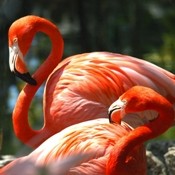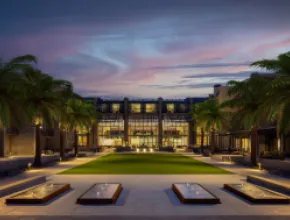It’s sunny, sandy, group-equipped and offers another-world environment close to home. The 700 islands of the Bahamas are famous for their sapphire-blue waters, history and stunning natural beauty on land and sea, and groups with a mind for ecological and cultural encounters—wrapped in the relaxed vibe of the isles—have a long list of activities to enjoy.
Vibrant coral reefs, powder-white sands and blue lagoons with 200-foot visibility to the sea floor give swimmers, boaters, divers and snorkelers a time they won’t forget.
These exotic islands have a long and colorful history, as they have attracted everyone from Christopher Columbus to traders, settlers, pirates and drug runners. Britain ruled the Bahamas for about three centuries, so mannerisms have a distinctly Anglo edge.
Situated only 40 miles off the Florida coast and a three-hour plane ride from New York City, the Bahamas is easy to reach. The nation is a 100,000-square-mile archipelago, with 14 main islands that anchor others, inhabited or not. The hub on New Providence Island is the capital city of Nassau. Major full-service resorts include Atlantis Paradise Island Resort & Casino; Wyndham Nassau Resort & Crystal Palace Casino; The Westin and Sheraton Grand Bahama Our Lucaya Resort; and British Colonial Hilton Nassau.
Two major international airports and many smaller ports are scattered about. Ferries, water taxis, rental cars and buses provide transport on and among islands. Other good news: As one of the easiest international destinations for U.S. groups to access, the Bahamas offer business groups a tax exemption for meetings, conventions and seminars. Also, U.S. visitors don’t need to change currency; Bahamians accept U.S. dollars or Bahamian currency.
George Brice, vice president of the Nassau Paradise Island Promotion Board, says many planners are surprised to learn how close the islands are to the U.S. mainland.
“Some people think we are very far away, but once they do the research they realize we are a close neighbor with lots of group-friendly amenities,” he says.
Besides the major-brand resort facilities, Brice says there are several facets to the island’s character that groups like to experience, apart from a business-and-beach agenda. One is its African heritage, another, the many ecological gems.
Arlene Nash Ferguson, founder and director of Educulture Bahamas, agrees with Brice.
“Groups are asking for culture and environmental activities more than ever,” she says. “They want to know more about the islands and how people lived as opposed to spending hours lying on the beach.”
One of the newest stops is Clifton Heritage Park, the site of a former plantation.
“They’ve found ruins from the days when American Loyalists came here following the Revolutionary War,” she says. “There are also partially restored slave quarters and traces of the first Bahamians, the Lucayans, who were here when Columbus arrived.”
Of course, the world-renowned Bahamian blue undersea world harbors unlimited excitement for divers, snorkelers and boaters. And for those who don’t want to get wet, there are island excursion destinations like “Pig Beach” on Big Major Cay, where pigs swim out to meet boats, and Allan’s Cay iguanas on Exuma, a gentle, protected species that are known to locals as Bahamian Dragons.






